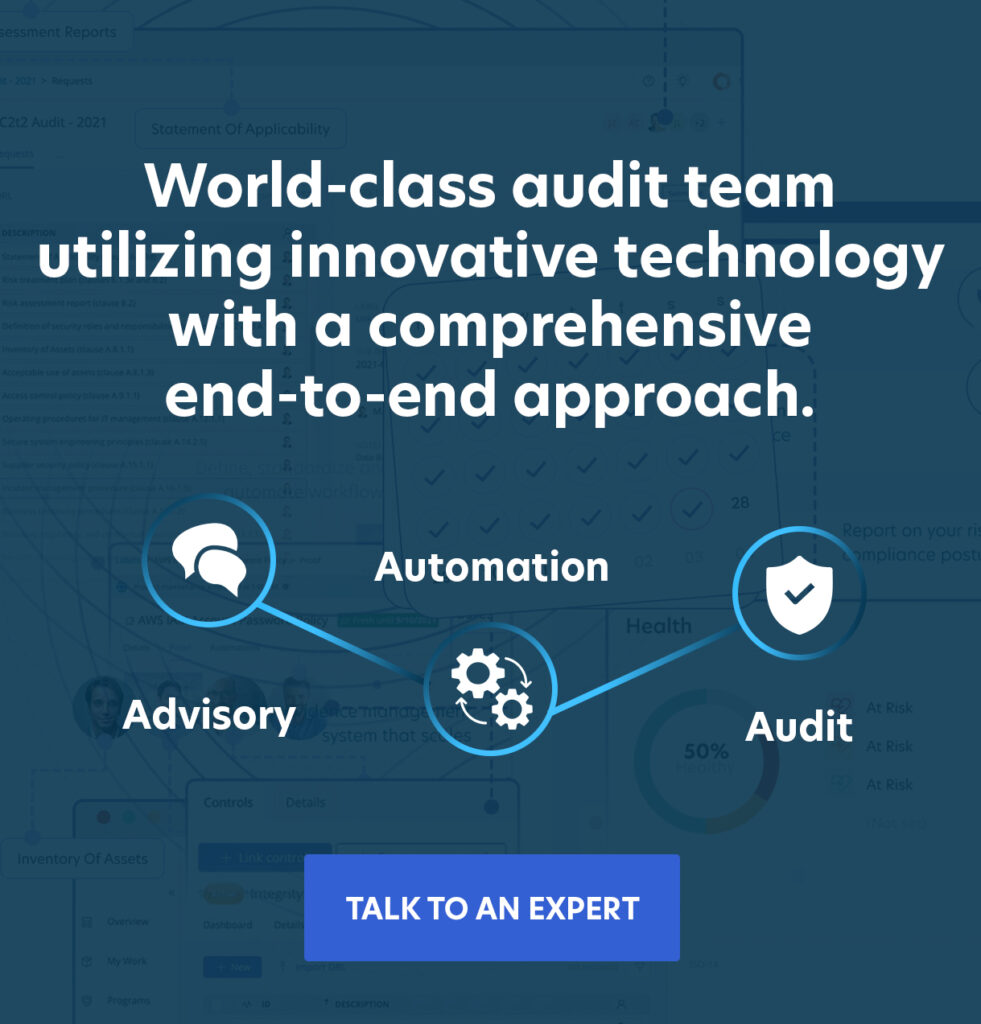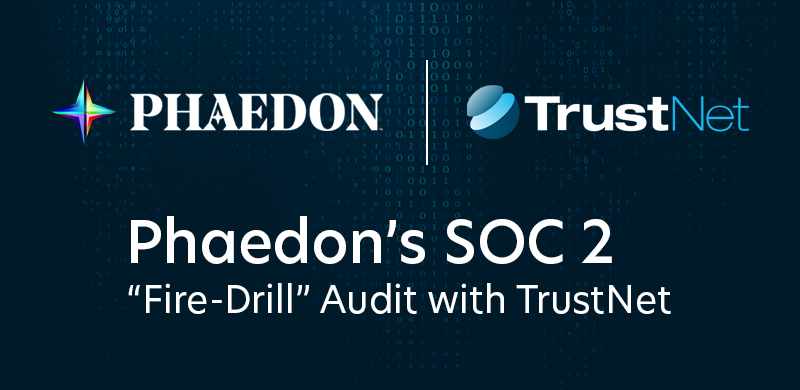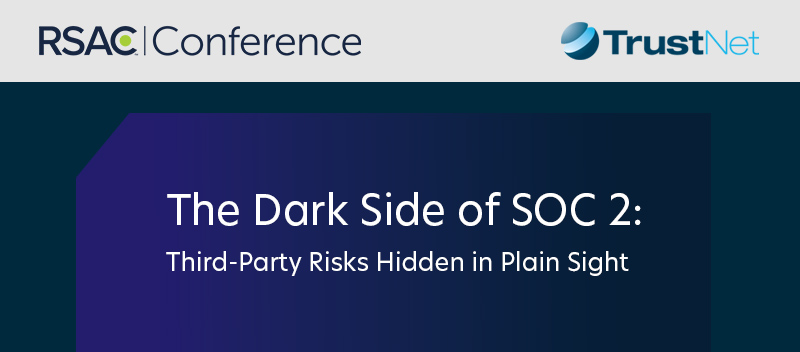The Importance of Third-Party Risk Assessments

TL;DR
Third-party risk assessments are essential for modern organizations that rely on vendors, suppliers, and service providers. These assessments help identify and manage risks related to cybersecurity, compliance, privacy, operations, and reputation. By conducting assessments throughout the vendor lifecycle, businesses can strengthen resilience, avoid costly disruptions, and ensure regulatory compliance.
Third-party risk assessments are vital for modern organizations. As businesses rely more on vendors, suppliers, and service providers, the risks, ranging from data breaches to operational disruptions, continue to grow.
In fact, 62% of organizations reported experiencing supply chain disruptions related to cybersecurity, marking a 13% rise from 2023. This highlights the growing challenge of managing third-party and supply chain risks.
(Source: Hyperproof, 2024 Benchmark Report)
In this article, we will explain why third-party risk assessments are critical, the steps to take, and the solutions available to manage vendor risk effectively.
What is a Third-Party Risk Assessment?
A third-party risk assessment evaluates the potential risks associated with vendors, suppliers, and service providers across the supply chain. It helps organizations identify vulnerabilities and protect themselves from various threats.
Key types of risks assessed include:
- Cybersecurity: Evaluating vulnerabilities that could lead to data breaches or other cyber incidents.
- Privacy: Ensuring compliance with privacy regulations and safeguarding sensitive data.
- Compliance: Assessing whether third parties meet industry regulations and standards.
- Operational: Identifying disruptions in the supply chain or business operations.
- Financial: Evaluating the financial health and stability of third parties.
- ESG (Environmental, Social, and Governance): Assessing a third party’s alignment with environmental and social governance standards.
- Reputational: Determining potential harm to an organization’s reputation due to third-party failures or misconduct.
Third-party risk assessments are not one-time tasks; they occur at various stages of the relationship, including:
- Onboarding: Conducted before establishing a partnership to assess initial risks.
- Periodic reviews: Ongoing evaluations to ensure that risks remain manageable over time.
- During incidents: Reassessing risks when security or operational incidents occur.
- Offboarding: Performed when ending a relationship to mitigate lingering risks.
Struggling to Stay Ahead of Third-Party Risks? TrustNet helps you assess, monitor, and reduce vendor risk with powerful automation and expert guidance.
ss
Why Are Third-Party Risk Assessments Essential?
Unmanaged third-party risks can lead to severe consequences, including data breaches, regulatory penalties, business interruptions, and reputational damage.
High-profile incidents underscore the importance of proactive assessments. For instance:
- Marks & Spencer (M&S):
Hackers exploited third-party IT helpdesk vulnerabilities at M&S and Co-op by impersonating employees and convincing helpdesk staff to reset passwords, granting them unauthorized network access. The attack on M&S led to significant operational disruptions, including halting online clothing and home orders, food supply issues, and an estimated financial loss of £30 million ($40 million), with costs still mounting weekly. (Source: Reuters)
- Co-op: Meanwhile, Co-op faced data breaches affecting up to 20 million individuals and disruptions to contactless payments, resulting in delayed deliveries and reputational damage. (Source: Reuters)
Third-party risk assessments strengthen organizational resilience by:
- Identifying and mitigating cybersecurity vulnerabilities.
- Ensuring compliance with regulations such as ISO, HIPAA, PCI DSS, and NIST.
- Enabling informed decision-making regarding vendor relationships.
By conducting thorough assessments during onboarding, periodically, during incidents, and at offboarding, organizations can proactively manage risks associated with vendors, suppliers, and service providers.
Categories and Frameworks for Third-Party Risk
Effective third-party risk management begins with understanding the types of risks and the frameworks that guide their assessment.
Key Risk Categories
- Profiled Risk: External factors such as geopolitical instability, economic conditions, or natural disasters that can impact a vendor’s operations.
- Inherent Risk: The level of risk present in a vendor relationship before implementing any controls. This includes risks related to the nature of services provided, data sensitivity, and access levels.
- Residual Risk: The remaining risk after applying mitigation strategies and controls. It reflects the effectiveness of the implemented measures.
Understanding these categories helps organizations prioritize resources and tailor risk management strategies accordingly.
Frameworks Guiding Third-Party Risk Management
Several established frameworks provide structured approaches to assess and manage third-party risks:
NIST Cybersecurity Framework (CSF)
The updated NIST CSF v2.0 introduces the Govern function, enhancing third-party risk management by prioritizing governance and accountability. Here’s how it integrates with third-party considerations:
- Govern: Establish clear policies, roles, and oversight mechanisms for third-party relationships to ensure alignment with organizational security goals.
- Identify: Recognize critical third-party dependencies and map associated risks.
- Protect: Implement safeguards like encryption and access controls for third-party systems.
- Detect: Strengthen monitoring to identify suspicious activity across third-party environments.
- Respond: Define incident management processes tailored to third-party breaches.
- Recover: Prepare recovery strategies to address disruptions involving partners or vendors.
ISO/IEC 27001
ISO/IEC 27001 supports managing third-party risks within an Information Security Management System (ISMS), offering:
- Risk Assessments: Systematically evaluate risks tied to vendors.
- Contractual Requirements: Enforce security standards in vendor agreements.
- Audits: Regularly check vendors for compliance.
- Incident Management: Collaborate with third parties during security events.
PCI DSS
PCI DSS addresses third-party risks specifically for payment environments by requiring:
- Vendor Compliance: Ensure third parties adhere to PCI standards.
- Data Security: Protect payment data across shared systems.
- Access Limitations: Restrict third-party access to sensitive environments.
- Periodic Evaluations: Reassess vendor security practices regularly.
These frameworks assist in establishing robust third-party risk management programs by providing best practices and compliance requirements.
Tailoring Assessments to Vendor Criticality
Not all vendors pose the same level of risk. Assessments should consider:
- Data Access: The type and sensitivity of data the vendor can access.
- Business Impact: The potential effect on operations if the vendor fails to deliver services.
- Regulatory Requirements: Compliance obligations specific to the vendor’s services.
Organizations can efficiently allocate resources and enhance their risk posture by aligning assessment depth with vendor criticality.
Steps and Best Practices for Effective Third-Party Risk Assessment
- Assemble Cross-Functional Stakeholders
Engage teams from IT, procurement, legal, compliance, and security to ensure comprehensive oversight. This collaborative approach facilitates a holistic understanding of vendor risks and promotes unified decision-making.
- Define Acceptable Residual Risk
Establish clear risk tolerance thresholds before onboarding vendors. By determining what level of residual risk is acceptable, organizations can make informed decisions about vendor engagements and necessary mitigation strategies.
- Standardize the Assessment Process
Implement a consistent assessment framework that includes:
- Vendor Tiering: Classify vendors based on the criticality of their services and the sensitivity of data they handle.
- Questionnaires and Due Diligence: Utilize standardized questionnaires to evaluate vendor security practices, compliance status, and operational resilience.
- Leverage Technology
Adopt automated solutions to streamline onboarding, risk surveying, and reporting processes. Technology can enhance efficiency, ensure consistency, and provide real-time insights into vendor risk profiles.
- Continuous Monitoring
Regularly reassess vendors, especially after significant changes or incidents. Continuous monitoring helps in identifying emerging risks and ensures that vendors maintain compliance with agreed-upon standards.
- Remediation and Transparent Reporting
Track identified issues diligently and require vendors to implement corrective actions promptly. Maintain transparent communication with stakeholders to keep them informed about risk statuses and remediation efforts.
Following these structured steps can help organizations effectively manage third-party risks, ensuring operational resilience and compliance.
Solutions and Tools for Third-Party Risk Management
Effective third-party risk management requires more than spreadsheets and manual tracking. Modern organizations use purpose-built tools to streamline assessments, track risk in real time, and scale with business needs.
The right solution should offer:
- Automated onboarding, assessments, and continuous monitoring
- Customizable questionnaires and centralized documentation
- Real-time dashboards that surface risk across all vendors
- AI-driven analysis to prioritize threats and support fast decision-making
TrustNet delivers all of the above in a single, integrated platform. We help you:
- Gain full visibility into your third-party ecosystem
- Standardize your assessment workflows and reduce compliance fatigue
- Act on risks faster with built-in remediation tracking and reporting
- Stay audit-ready with documentation that maps to major frameworks
Whether you’re scaling your vendor network or strengthening controls, TrustNet gives you the visibility, tools, and support to manage risk with confidence.
When to Hire a Vendor Risk Assessment Company or Consultant
Hiring a third-party risk assessment consultant adds significant value when:
- Your vendor ecosystem is complex and spans multiple geographies or industries
- Regulatory pressures increase, and your internal team lacks capacity or expertise
- You need to onboard vendors quickly without sacrificing risk oversight
- Your compliance efforts require expert guidance and streamlined execution
External specialists like TrustNet help you manage assessments end-to-end, from initial evaluations and onboarding to remediation and compliance documentation. We also bring tested methodologies and frameworks that improve consistency and reduce blind spots.
TrustNet’s Accelerator+ delivers a unified solution that blends expert insight with powerful tools. Here’s how we help:
- Advisory: We benchmark your current posture, identify gaps, and define a path toward stronger compliance
- Automation: Our platform (GhostWatch) simplifies risk assessments, compliance tracking, and audit preparation year-round
- Audits/Assessments: Our seasoned auditors/assessors ensure your audits/assessments run efficiently and deliver actionable findings
Our Accelerator+ approach empowers organizations to manage risk confidently and scale compliance initiatives with precision.
Next Steps
As organizations rely more on vendors, gaps in oversight can lead to data breaches, regulatory violations, and reputational harm. Proactive vendor risk management protects your operations, strengthens compliance, and supports long-term resilience.
Now is the time to act.
- Review your current risk assessment processes
- Identify gaps that may jeopardize your business
- Implement tools that scale
- Bring in expert support
Connect with us today.
Strengthen your vendor risk management. Partner with TrustNet for third-party risk assessment solutions that deliver clarity, confidence, and control.
Subscribe to the TrustNet Newsletter
actionable cybersecurity strategies, and TrustNet’s cutting-edge solutions.




